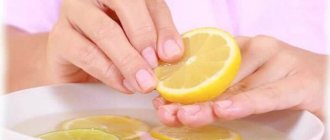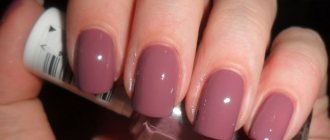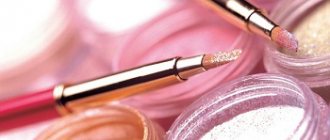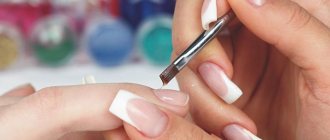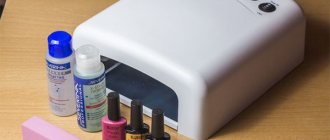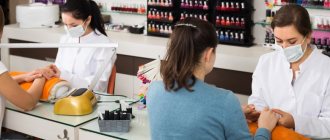What product do you think is impossible for any master to do without? Most will immediately answer that no nail degreaser, and this is the correct answer!
Degreasing and skin remover Green tea ParisNail 950 ml
2in1 Nail plate degreaser and nail remover with pump Nail Prep Lux Domix 255 ml
Degreasing and lubricating agent Eurocleanser Lux E.MiLac 1000 ml
Degreasing the nail plate is the most important stage of work before using any artificial coating. Now let’s figure out why a degreaser is needed, what functions it performs besides degreasing the nail plate, how to choose a quality product, what to do if the degreaser runs out and what to replace it with!?
You will learn everything about degreasers and even more right now if you stay and read the material to the end!
What is a degreaser?
This product removes dust, tiny particles of dirt, as well as grease and shine from the surface that needs to be cleaned. Many manufacturers call the degreaser a cleanser, preprimer or nail prep.
The main area of application of the degreaser is cleaning the nail plate. This is usually done before any artificial turf is applied. The degreaser removes all excess from the nail and ensures stronger adhesion of materials. If this is not done, then the coating or extended nails will last only 7-10 days instead of the promised 3 weeks. This is due to the fact that secretions resulting from the natural moisture of the nail plate negatively affect the adhesion of materials, which can cause detachments to appear.
But cleaning the nail plate is not the only use of a degreaser.
The best primers for degreasing
Products in this category are usually used by professional nail industry professionals. Primers effectively degrease the nail plate, penetrating into the deepest layers. For home use, it is better to buy acid-free products.
IRISK Prep Primer
Ethyl-based primer is intended for disinfection, degreasing, and moisture removal. The product spreads well over the nail plate and significantly extends the wear life of the decorative coating. The degreaser is available in two volumes: 5 ml (approximate price - 165 rubles) and 20 ml (370 rubles).
Advantages:
- dries in a few seconds in air, without a lamp;
- economically used;
- The convenient flexible brush distributes the liquid in a very thin layer.
Flaws:
- Strong smell.
TNL Primer Bond
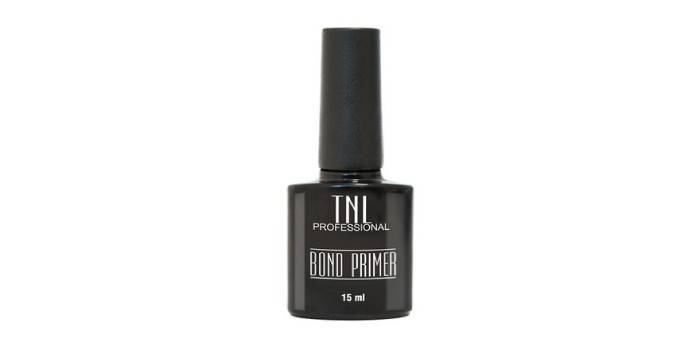
The degreaser is from a Korean manufacturer, available in a volume of 15 ml and costs approximately 250 rubles. The primer is acid-free, with a sticky layer, and works on the principle of double-sided tape. The primer does not contain acids, therefore it is safe for the body and does not cause irritation. Apply the base in a thin layer to the middle of each nail with the brush that comes with the kit.
Advantages:
- low cost for such a volume;
- provides good adhesion without peeling or chipping;
- dries quickly;
- extends the period of wearing the coating;
- lasts a long time (when used at home, the bottle is used up in a year and a half).
Flaws:
- the brush is too large; when applied, it diverges in different directions, leaving untreated areas;
- Because of the dark bottle you can’t see how much product is left.
MOZART HOUSE SUPERBOND

This acid-free primer provides excellent durability of any coating, including regular varnish. The primer contains a minimal amount of methacrylic acid, so it is not harmful to the body. Apply in two layers, dry on its own, without a UV lamp. The cost of a 10 ml jar is 320 rubles.
Advantages:
- works effectively;
- dries quickly;
- not aggressive;
- significantly extends the wear life of the coating (gel polish lasts at least 3 weeks without chipping);
- The smell is not as strong as most primers.
Flaws:
- not detected.
Why do you need a degreaser?
This tool, as it turns out, has many more functions than you thought!
In what cases is a degreaser needed?
For preparing materials using stamping technique
All materials for stamping: plates and scraper must be cleaned with a degreaser in order to care for them and in order to remove any remaining paint or varnish. If this is not done, then greasy fingerprints and dust microparticles will remain on the tools, which will automatically be transferred to the design. Judge for yourself whether you need such surprises when creating a stamping design.
In the case of the nail plate, a degreaser is necessary so that the design does not float in stickiness and the outline is clear. Even the pad of the stamp can slip through the stickiness during transfer and the design will not be transferred to the surface of the nail if the surface is not degreased.
To remove the sticky layer
Dispersive (sticky) is formed immediately after polymerization. It must be removed with a degreaser to ensure reliable adhesion of all layers to each other. For example, bases with gel polish, gel polish with top. At the finish line, that is, after the top has polymerized, it is imperative to remove the sticky layer so that the coating is perfect!
To prepare the nail plate for design
This point applies, first of all, to French or any designs where it is necessary to remove the sticky layer. For example, sliders, on the contrary, require a sticky layer, but for a number of other designs it is not needed. For example, to create a particular drawing by hand, to draw a “smile,” you need to remove the sticky layer and only then start creating the composition.
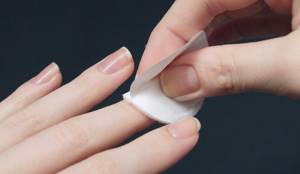
Why degrease your nails?

Using a degreaser
Before you start extensions or design, you need to prepare the nail, remove particles of sebum, dust, and food debris from it. This is necessary so that the adhesion to the gel is subsequently flawless. If you don't degrease the nail plate well enough, the entire manicure can peel off very quickly.
To perform this function, manicurists use a special liquid - degreaser .
After degreasing the surface of the nail, do not touch it with your fingers! This will leave a microscopic greasy trace, and the degreasing effect will be neutralized.
Degreaser and dehydrator

Nail dehydrator
A degreaser is sometimes confused with a dehydrator . But these are two completely different means, each of which has its own tasks.
The dehydrator is designed to remove any unnecessary moisture from the nail plate , not only from its surface, but also from deep. Water left under artificial turf can ruin not only the master’s work, but also the nail.
To avoid troubles, it is not recommended to take baths or use moisturizing creams or oils before artificial extensions: the nail plate must be dry .
Primer and bonder

Primer and bonder
The next pair of terms that confuse inexperienced fashionistas: primer and bonder . These funds also have nothing in common with each other.
To make the adhesion between the microscales of the nail and the polymer material of the future coating stronger, of primer : acidic and acid-free . It is applied after a dehydrator and degreaser. It is quite an aggressive product, so avoid getting it on your skin.
A tool intended for fastening, adhesion, and tying together layers during the modeling process is called a bonder or bond (from the English verb to bond).
The difference between a degreaser and similar products
Thus, the degreaser has no analogues: all of the listed products have their own functions, as well as their own order of application. Below is a summary table of the properties of these tools:
| Degreaser | Dehydrator | Primer | Bonder, bond |
| Dissolves fat | Dries the nail surface | Raises microscopic scales | Strengthens adhesion between layers |
| Removes possible food residues | Removes excess moisture from the nail thickness | Removes residual grease and moisture | |
| Removes dirt and dust |
How to use degreaser?
You will need lint-free wipes, a degreaser and a work area (nail plate, stamping materials, etc.).
- Dampen the cloth and treat the required surface. Take a lint-free cloth so that lint, dust or other microparticles do not get onto the treated area. Otherwise, there will be no point in skimming.
- If you use a degreaser on a clean nail plate, you should do this immediately after removing the natural gloss with a buffer or a grinder file. After the degreaser, you can use a primer and then apply a base coat.
- If you are removing a sticky layer, use a degreaser after the coating has cured in a lamp. At the very end, when you polymerize the top, this is mandatory, but in other cases, removing the sticky layer is done if necessary, for example, when preparing for design, French, stamping, etc.
Important!
Degreasing must be done over the entire surface of the nail plate and adjacent areas: the proximal fold and side ridges.
Review of my funds
Degreaser Severina
I used three different products for degreasing nails and removing the sticky layer from this company, and they all did their job equally well. Small differences between them are only in composition, volume and dispenser. Here is my latest and current remedy:
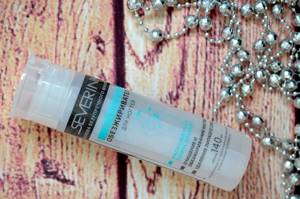
Volume – 140 ml
The product is a clear liquid and is very similar to nail polish remover. It has no characteristic odor.
The dispenser is unusual: the bottle does not need to be turned over, just apply a napkin and press on it. This speeds up the work of collecting the solution. It is only inconvenient in this case to regulate the amount of injected product - it depends on the degree and sharpness of the pressure.

Share your favorite nail degreasing products in the comments, we will collect the best in one place. Thanks for your attention and bye!
What mistakes can you make when using degreaser?
Now let's talk about how not to use a degreaser and what mistakes you can make in operation.
- Using regular wipes or cotton pads instead of lint-free ones
- It is necessary to degrease not only the nail plate, but also the area of the proximal folds, lateral ridges, etc.
- You can’t apply a base or primer immediately after degreasing - just wait a couple of minutes for the surface to dry and start degreasing the rest of your nails
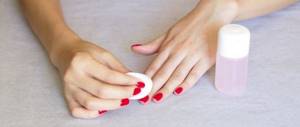
Reviews
Iya: Some time ago I came to the salon to get my nails done and they started preparing my hands. When applying the primer, the master touched the skin - the sensation was not pleasant. But with Severin’s degreaser, no unpleasant situations ever happened.
Christina: I am a manicurist myself and I advise you to use only high-quality, proven primers. You never know how an unfamiliar product will behave and how suitable it will be for your clients, which is why I always make sure to get the composition I’m used to in advance.
Marina: I don’t understand what is applied there during a manicure, but I confirm that for gel polish you only need a specially prepared plate! Once I wanted to apply the color myself and simply painted it on like a regular varnish and dried it in a lamp. The result was disappointing - everything started to chip off pretty quickly, so there were no problems removing the shellac.
What can replace nail degreaser?
Sometimes craftsmen are faced with a situation where the degreaser runs out at the most inopportune moment. In such cases, it is useful to know what this product consists of. Its main component is alcohol.
Accordingly, products containing alcohol are suitable as an alternative. If necessary, you can dilute them with distilled water so that the nail plate does not dry out too much.
What to use instead of degreaser:
- Medical alcohol
- Boric acid
- Nail polish remover with acetone
What not to use:
- Soap solution
- Citric acid
- Undiluted rubbing alcohol
- Vinegar
Important!
Do not try to replace the degreaser with a primer (either acidic or acid-free), bonder or dehydrator, as the products perform completely different functions and will not have the intended effect. Read more about all these products in our article “Bonder, primer, dehydrator, degreaser: what is the difference?”
The use of third-party nail plate treatment products or tools should be avoided!
Firstly, anything that is not called a degreaser will not give you the desired effect and as a result we will get a non-wear-resistant coated manicure.
Secondly, you will harm the nail plate if you use alternative options. They dry out your nails and have consequences in the form of difficulty removing the coating, not to mention chipping, cracking and peeling.
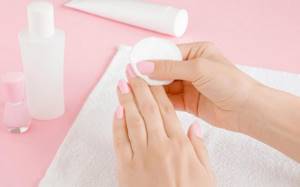
Compound
When choosing a degreaser, an important element is the composition. The base of the degreaser can be an acid-free substance or an acid-containing one. The difference between these components is colossal - from the cost to the effect on the nail.
In addition to the possible presence of acids (methacrylic acid is used), there may be additional components inside the bottle: vitamin complexes, disinfectants (for example, alcohol, ethyl acetate). Also fragrances, special oils, isobutyl or butyl acetate, isopropanol.
Allergy to degreaser
It is extremely rare that situations may arise when a client has an allergic reaction to a degreaser or the skin reacts very aggressively to the product.
This can be seen from the characteristic symptoms:
- redness,
- itching,
- peeling,
- burning of the skin of the hands and fingers.
Sometimes watery eyes, sneezing, and nasal congestion occur.
Important!
People prone to skin diseases: dermatitis or dermatosis, as well as if you have sensitive skin, should be especially careful when using various chemical agents.
To check whether a particular product is right for you, you need to literally apply a drop to the skin. If you have an allergy to this product or its components, it will manifest itself in a few minutes. The main thing is to warn the master who does your manicure, and if you are a master yourself, then warn your client about allergic reactions. So, you can find an alternative approach together and choose another product that will help you create the perfect coating!
What composition is better to choose?
The degreaser should be chosen correctly, as some people have allergies to the components of the composition, which they may not be aware of.
Professional nail primers are divided into 2 types based on their composition:
- Acidic. Aggressive towards the nail plate. Acidic products lift the keratin scales of the nail for better adhesion of the plate and the artificial material. Regular use of degreasing solutions leads to brittleness and thinning of nails.
- Boneless. They have a gentle effect and often contain vitamins and minerals. Regular use of acid-free products does not have a negative effect on the nail plates.
Strong fixation of the artificial material is required for the extension procedure. At home, it is better to use acid-free products. They provide sufficient fixation for good durability of the manicure.
Comparison of professional and home remedies
All alternative options pose a potential threat to nails.
The harm from using professional products is reduced to zero. They also have an aggressive effect, but do not lead to disruption of the water balance or thinning of the nails. After their use, the plates do not delaminate.
There is no guarantee that home remedies will be absolutely safe. Therefore, when choosing between professional and alternative options, you need to understand all the risks. Trying to save money can ruin your nails.
What to consider when cleaning
About a day before the manicure procedure, do not use nourishing or moisturizing creams or other hand skin care products. Plate preparation products cannot be applied with cotton pads. The smallest fibers stick to the surface, which subsequently interferes with the uniform application of manicure layers. Use linen or cotton napkins.
Improvised means are not suitable for artificial nail extensions. This requires enhanced adhesion between the nail and the manicure plate, which only professional solutions can do. And a manicure on nails degreased with homemade products will not last as long as in cases treated with professional products.
